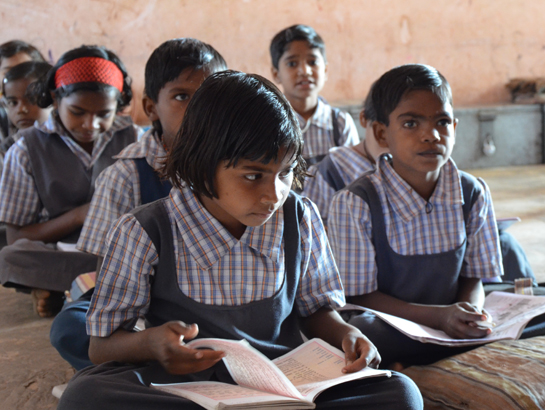A study conducted in India has shown that eating iron-biofortified pearl millet measurably improves brain function and cognitive behaviors like memory and attention, in addition to increasing iron levels in the body. These findings are consistent with an earlier study in Rwanda with women who ate iron beans.
The negative impacts of iron deficiency on cognitive behaviors and brain function—including significantly poorer performance by children at school—are known. But how iron deficiency causes its negative impact on brain and behavior is less well understood. This study demonstrates that low iron levels in the blood likely affect dopamine levels (a chemical messenger made in the brain that sends signals around the body that influence mood, motivation, and learning), while also impairing transportation of oxygen around the body (iron is required to bind oxygen for circulation in red blood cells via hemoglobin).
Encouragingly, repletion of iron status by eating iron pearl millet can correct the negative impacts on cognitive function, mediated through changes in the brain.
“These results are exciting, not only because they demonstrate that brain activity can be normalized by eating an iron-biofortified crop, but that brain health needs to be thought about along with other health outcomes,” said Michael Wenger, Director of the University of Oklahoma’s Visual Neuroscience Laboratory, Professor of Psychology and Cellular and Behavioral Neurobiology and lead author of the publication. “Biofortification is having a positive impact on measures of brain health as well as other measures of health,” he added.
This research, published in BMC Public Health, was conducted as part of a randomized controlled efficacy study in Maharashtra, India among 246 adolescents attending a rural boarding school. All study participants ate flatbread (chapati) and a snack made with pearl millet flour twice a day for six months; half of the adolescents ate biofortified iron pearl millet and half ate conventional pearl millet. The children who ate the iron-rich pearl millet not only experienced a reversal of iron deficiency, but also exhibited improvements in memory, attention, and physical activity levels.
Electrical activity in the brain was measured through electroencephalography (EEG), a safe, non-invasive method, while attention and memory were measured through five behavior tasks. These were completed by 90 of the 12–16-year-olds taking part in the efficacy study, specifically those with the lowest iron levels (measured by serum ferritin) and greatest potential to benefit. Changes recorded in EEG levels reflect responses of neurons in the brain firing properly to transform a stimulus (like hunger) into a behavioral response (like eating).
Biofortification is a proven, efficacious, food-based approach to address iron deficiency for the benefit of the body, brain, and behavior during ages critical for learning and preparing to participate productively in society. This study adds to the robust body of evidence on the nutritional, health, and socioeconomic benefits of biofortification, summarized in Biofortification: The Evidence.
HarvestPlus is the global leader in biofortification; together with more than 600 partners worldwide, HarvestPlus works to integrate nutrient-enriched staple crops including iron beans and iron pearl millet into rural food systems. By the end of 2021, nearly 13 million farming households were growing biofortified crops and 64 million people were benefitting directly from them.
Read More:
Wenger MJ, Murray Kolb LE, Scott SP, Boy E, Haas JD. Modeling relationships between iron status, behavior, and brain electrophysiology: evidence from a randomized study involving a biofortified grain in Indian adolescents. BMC Public Health. 2022 Dec;22(1):1-4.
